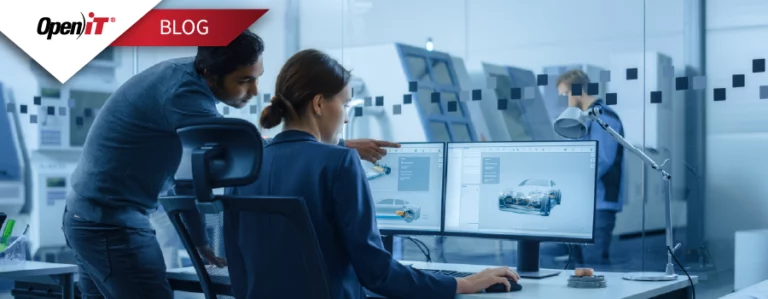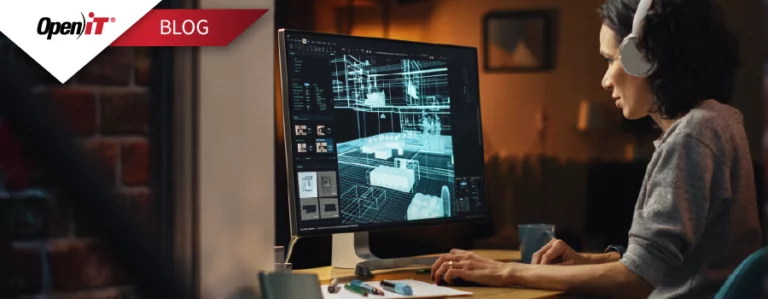We are frequently surprised by the number of organizations who rely on license management software supplied by vendors to manage their software portfolio. First of all, these applications are designed to maximize income for the vendor, not minimize wastage and spend for the customer. IBM even draws Maximo customers’ attention to this, stating that IBM LUM “does not prevent overuse of licenses and does not replace the IBM license auditing process”.
Secondly, most of our customers are in the engineering, scientific, and life science industries, where they are completely dependent on a wide range of specialized software tools. The vendors for these applications use a wide range of license management systems, such as Flexnet, DSLS, Sentinel Hasp and the other Sentinel products, LS-DYNA, and many others. This means that your license administrator must know all the variations of these license managers and spend their day interrogating each of them to get a helicopter view of your portfolio. If the only reporting tool available is Excel spreadsheets, this just adds to the workload. This is also a very reactive management approach when you really need to be proactive.
Clearly, this is not a viable way of managing and tracking software licenses. What you need is a versatile software license manager that can interface with most or all of the vendor license managers in the marketplace and within your organization. LicenseAnalyzer® is Open-iT’s primary product, and it is the first choice of major players in the automotive, healthcare, oil and gas, and other industries.
What Tracking License Usage Reveals
Knowing how and when, or even if, your licenses are being used can prove very valuable. It is estimated that the average company overspends 30% of their budget on licenses for a variety of reasons. At the same time, you may have users who are receiving denials when they want to check out a vital application or software. This makes for unhappy users and reduces productivity.
The kneejerk reaction is to obtain more licenses.However, what you need is visibility and transparency as to how the existing license pool is being accessed, by whom and whether they are actually using the software. This is where LicenseAnalyzer can come to the rescue. Comprehensive reporting across various software products, license servers, and usage is available on a single dashboard. Here are only a few examples of what detailed license tracking can reveal:
- A license that has been checked out and not released when the user has finished with it; thus, creating an artificial shortage of licenses and resulting in a denial for someone who needs to use the software. This can also be a problem when you have a global footprint, where time of use for a user should be limited to local working hours.
- A software product in a vendor portfolio that is not used, although you are paying for it. This is common with vendors like Autodesk.
- Legacy software that is about to sunset and should be retired and replaced or discarded.
- BYOD (bring your own device) licenses. You may have contractors on site who have their own software licenses, which they are using on your network. This could be an infringement of your license agreement with that vendor and lead to penalties.
The ability to see who was using a license for how long, the heatmaps revealing maximum usage and the time when it occurred, the number of denials occurring for a product, and a graph of true software utilization are only a few of the reports available to the license administrator. This is available across servers, vendors, products, and even features within a software product. Differences in license types, from named-user licenses to token-based software, are managed by the software license management tool. This even includes hardware-based licenses on dongles, like Wibu CodeMeter.
What you will also be able to identify are specific user roles and which software entitlements are appropriate, for instance, what jobs need a full Visio license, or is a Viewer sufficient? This can also apply to other common products like Adobe Acrobat. When it comes to specialized and expensive software like Aris, Catia, or PTC Creo, just shedding one or two surplus licenses eases the annual software budget.
Deriving the Benefits of Effective Software Tracking
Of course, while the reporting reveals where you can improve license usage, there is still work to be done to analyze where savings and efficiencies can be applied. You should be able to realize at least 10% savings on your most critical software, but it does require negotiation with the vendor. You now also have a viable bargaining tool for your next contract renewal, without being reliant on your vendor’s view of software utilization. The anxiety of software audits and true-ups goes away, as you are now in control and have documented proof of software usage.
Achieving the efficiencies that are revealed by your software license manager does not happen overnight. You may need to revisit your policies, processes, and procedures, as well as educate users so that they are aware of the costs they are incurring. There are practices such as license harvesting that are very effective, but you first need to walk the path of software tracking before you can run.
Effective Software License Management is a Journey
Tracking your software licenses is a good start on the roadmap to software asset management (SAM) maturity. There are several SAM Maturity models to choose from, ranging from ISO’s comprehensive but complex ISO/IEC 19770-1 to Microsoft’s SOM (Software Optimization Model), which has 4 stages. In the SOM Model, if you are tracking assets, you have started moving to the second stage. But there are other requirements you have to meet to get a secure foothold on that rung of the ladder, such as ensuring that policies and processes for SAM are in place. Get in touch with an Open iT sales representative to start your SAM maturity journey.
What you will also be able to identify are specific user roles and appropriate software entitlements. For instance, what jobs need a full Visio license, or if a Viewer is sufficient.





